The Sahara is located in the northern part of Africa, the largest hot desert in the world. The Greater Sahara covers more than 3,500,000 square miles (9,000,000 square kilometers), or 10 percent of the continent. It extends westward to the Atlantic, while the northern border of the Great Sahara is in the Mediterranean Sea, while in the south it ends in the Sahel, an area characterized by desert landscapes in semi-arid tropical savannah.
As we have mentioned, the Great Sahara accounts for about 10% of the African continent, and the Great Sahara is often cited as the largest desert in the world, but this is not entirely true, it is only the largest hot desert in the world and the largest desert in the world is actually located in Antarctica.
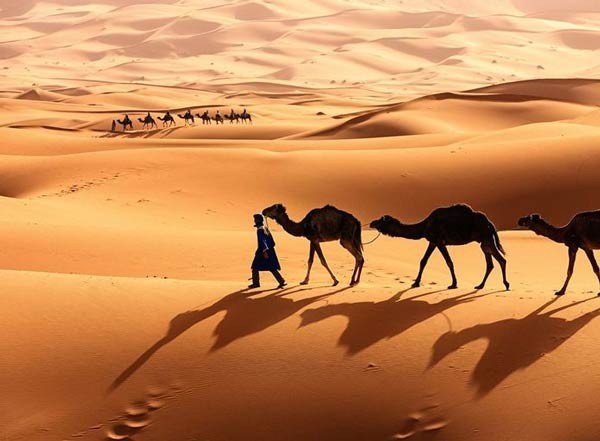
Geography of the Sahara:
The Sahara covers parts of several African countries, including Algeria, Chad, Egypt, Libya, Mali, Mauritania, Morocco, Niger, Sudan and Tunisia. Most of the Sahara regions are characterized by varied terrain. Most of the landscape has been formed over time by wind, Sandy, sandy seas, arid stone hills, gravel plains, dry valleys and saline surfaces. About 25% of the desert area is sand dunes, some of which reach more than 500 feet (152 m) in length.
There are also several mountain ranges in the Sahara Desert, many of which are volcanic. The highest peak found in these mountains is the summit of Amy Kosi and the volcano of the shield, which rises to 11204 feet (3,415 square meters), part of the Tibesti group in northern Chad. From the deepest point in the Sahara up to 436 feet (- 133 meters) below sea level.
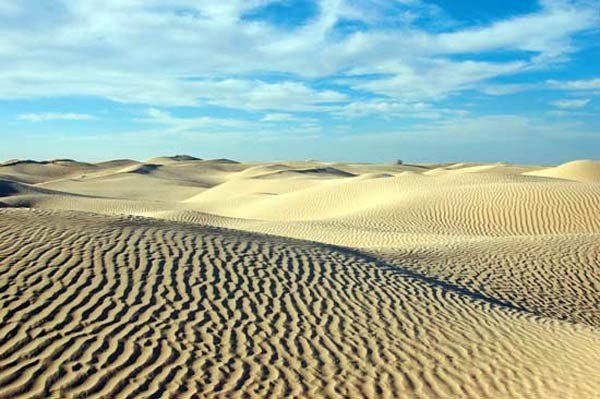
Most of the waters in the Sahara today are seasonal or intermittent. The only permanent river in the Sahara is the Nile River, which flows from central Africa to the Mediterranean Sea. Other waters in the Sahara have been found in aquifers, This water reaches the surface, and we find in the desert some oases and small towns or settlements such as the oases of Egypt and Ghardaia in Algeria.
The amount of water and terrain varies according to location. The Sahara is divided into different geographical areas. The Sahara Desert is arid and has little vegetation, while the northern and southern parts have a number of sparse pastures. There are also desert shrubs and we find them in areas where there is moisture Redundant.
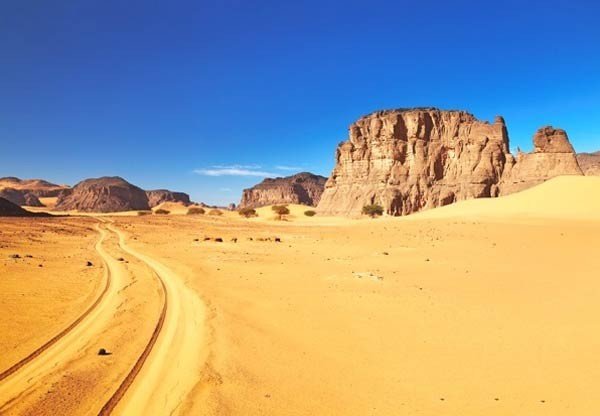
Sahara Climate:
Although the Sahara climate is very hot and dry today, it is believed that the Sahara has experienced various climatic changes in the last 100 years. For example, during the Ice Age, rainfall in the Sahara was low, but from 8000 before In the year 6000 BC, there was an increase in precipitation in the desert due to the low pressure on the ice sheets in the north, and once these ice sheets melted, however, this low pressure turned to drying north of the Sahara and the south continued to receive moisture due to Monsoon.
Around 3400 BC, the southern monsoons moved to what they are today and the Great Sahara dried up again and reached its present state. In addition, there is a convergence between the tropics working to prevent moisture to the Sahara, and the northern storms As a result, the annual precipitation in the Sahara is less than 2.5 cm (25 mm) annually.
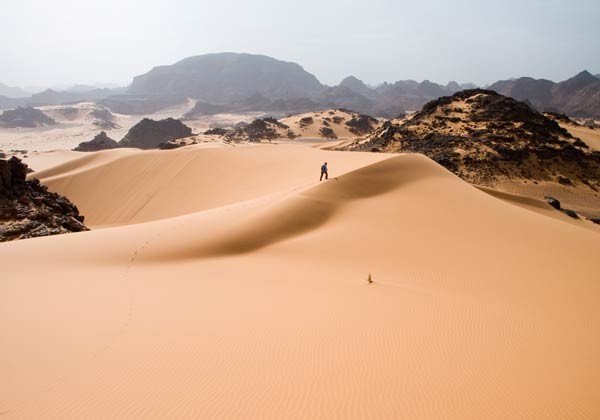
Although the Sahara Desert is very dry, Sahara has become one of the most important regions in the world, with an average annual temperature of 86 ° F (30 ° C). But during the hottest months, temperatures can exceed 122 ° C (50 ° C) ) ° F, according to the highest recorded temperature in the Sahara was 136 (58 ° C) ° F in Azizia and Libya.
Plants and animals in the Sahara:
Due to the high temperatures and arid conditions in the Sahara desert, the plant life in the desert is few and includes only about 500 species of plants. This group consists mainly of heat resistant varieties and can adapt to saline conditions where it has sufficient moisture.
The harsh conditions in the Sahara also play a role in the existence of specific animal life in the desert. In the dry central part of the Sahara, there are about 70 different species of animals, 20 of which are large mammals such as spotted hyenas, , And reptiles such as the snake of sand and lizard are also found in the desert.
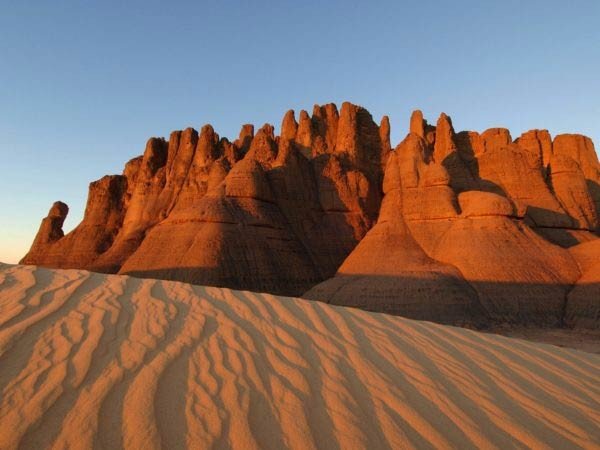
The people of the Sahara:
It is believed that people inhabited the Sahara since 6,000 BC earlier, including the Egyptians, Phoenicians, Greeks and Europeans were among the peoples in this region, and today the Saharan population is about 4 million, and the vast majority of these people live in Algeria, Egypt, Libya and Mauritania And Western Sahara.
Most of the people living in the Sahara today do not live in cities. The most famous of these are the Bedouin who move from one region to another throughout the Sahara. Because of this, there are many different nationalities and languages in the region, but Arabic is the most widespread there. , For those who live in cities or villages in fertile oases are harvesting crops and mining minerals such as iron ore (in Algeria and Mauritania) and copper (in Mauritania) and are doing important industries that allowed population centers to grow.
I hope that my explanation has benefited you
Thank you for visiting my blog

Hi! I am a robot. I just upvoted you! I found similar content that readers might be interested in:
https://www.thoughtco.com/sahara-desert-overview-1435189
Thank you for taking part in this months #culturevulture competition. Good Luck
Congratulations @body-building! You have completed some achievement on Steemit and have been rewarded with new badge(s) :
Click on any badge to view your own Board of Honor on SteemitBoard.
For more information about SteemitBoard, click here
If you no longer want to receive notifications, reply to this comment with the word
STOP